While most people are well aware that oil contamination can cause timing belt failure, few realise that oil can be equally detrimental to the automatic tensioner. With the exception of some modern engines (i.e. engines with tensioners specially designed to function in oily environments), an automatic tensioner contaminated with oil causes the belt drive system to malfunction, which in turn leads to engine failure. Discover the full story.
The spring loaded friction damping principle
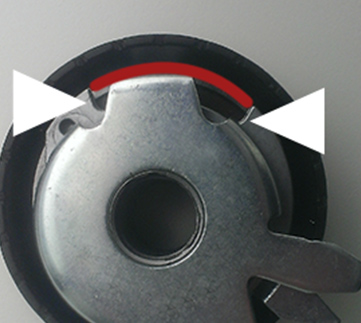 The automatic synchronous tensioner provides consistent belt tension over the working range indicated by the red curve in the image on the left. The curve extends between the point of undertension or the so-called ‘cold stop’ (indicated by the left arrow), and overtension or the ‘hot stop’ (indicated by the right arrow).
The automatic synchronous tensioner provides consistent belt tension over the working range indicated by the red curve in the image on the left. The curve extends between the point of undertension or the so-called ‘cold stop’ (indicated by the left arrow), and overtension or the ‘hot stop’ (indicated by the right arrow).
The synchronous tensioner operates according to the spring loaded friction damping principle: damping is generated by the friction between the sleeve and the bushing.
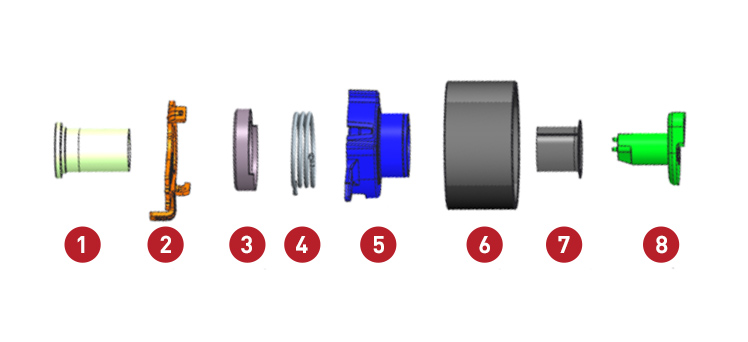
Tensioner components: 1: Sleeve - 2: Base plate - 3: Centering Spacer - 4: Spring - 5: Arm - 6: Pulley Bearing Assembly - 7: Bushing - 8: Adjuster.
Oil contamination of the automatic tensioner
Oil leaking into the tensioner area should be avoided at all costs. Similarly, leaking water pumps (which can cause coolant to enter the automatic tensioner) should be closely monitored as well. Cooling liquid, after all, contains oil derivatives. The consequences of oil contamination are dire (see images below): oil on a normal timing belt tensioner affects the amount of friction. Soon, it leads to a reduction in damping.
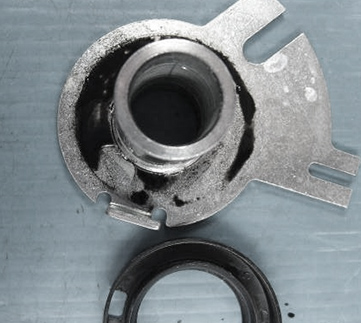
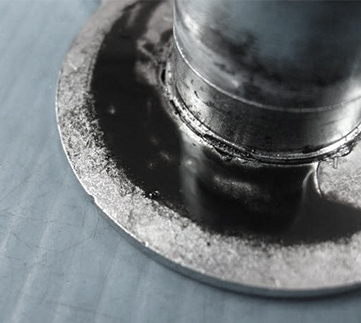
Consequently, the tensioner loses control over the engine dynamics due to improper damping. This, in turn, results in too much arm movement and, hence:
- fatigue failure or spring failure, leading to engine failure,
- the incorrect damping leads to damaged stops on the base plate (see images below), proving improper tensioner damping function, which again results in tensioner damage/engine failure.
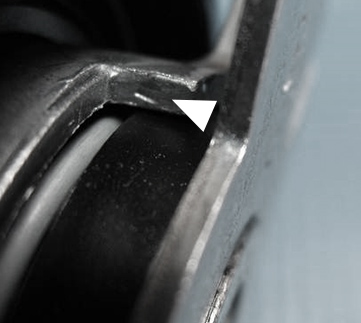
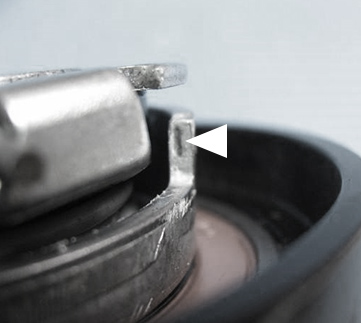
The importance of proper maintenance
It will be clear by now that preventing oil from getting into the synchronous drive is crucial to avoid malfunctions such as improper belt tension, incorrect damping, arm movement, and belt flapping. Looking for more information? Kindly read our recommendations for replacing timing belts. They will also help you diagnose timing drive failure and carry out maintenance perfectly every time.